www. themegallery. com LOGO Credit rating


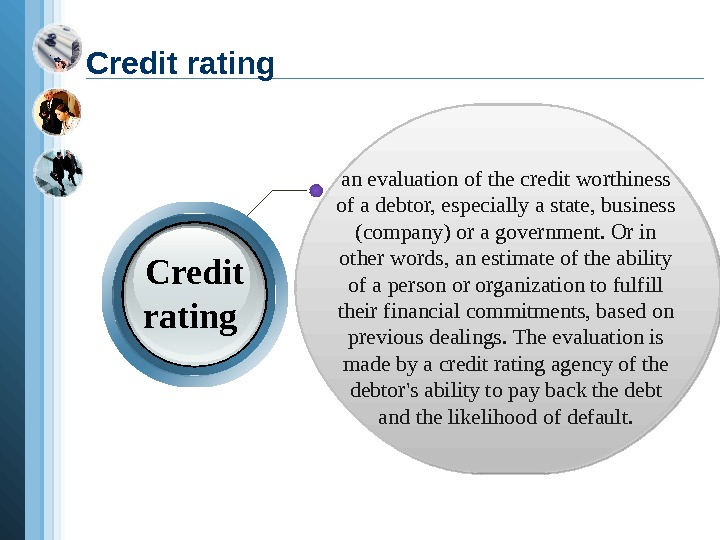
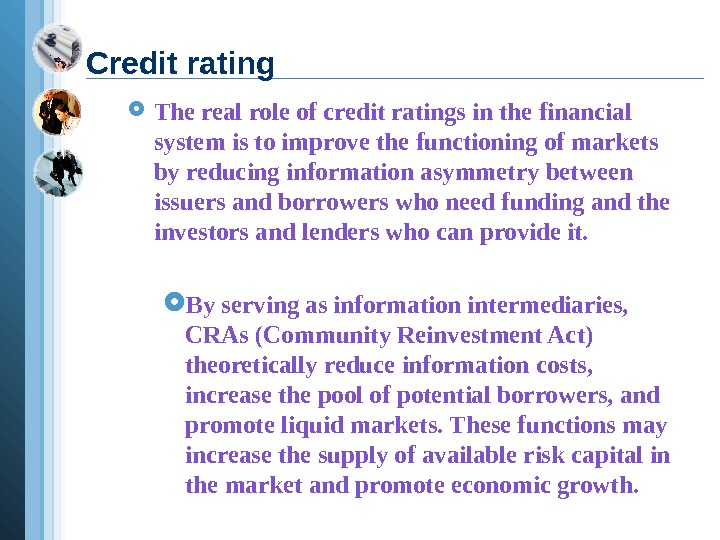
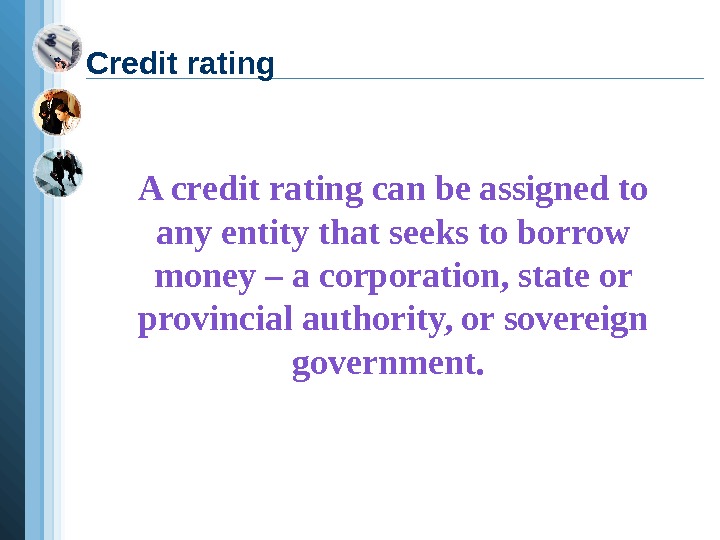
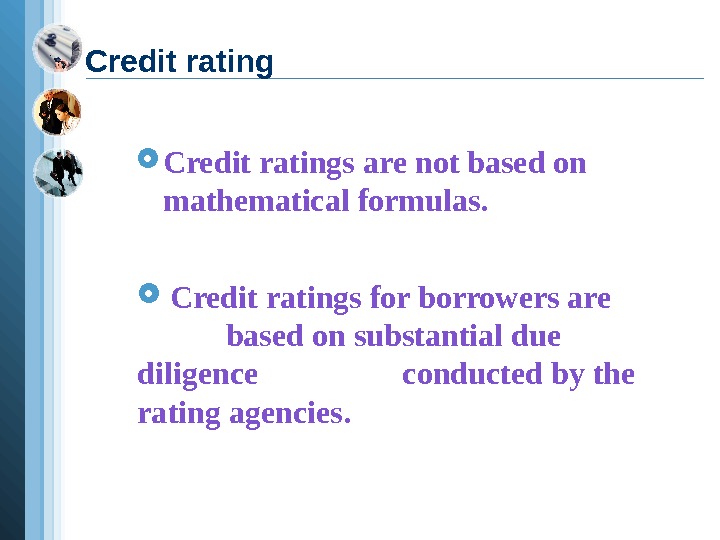
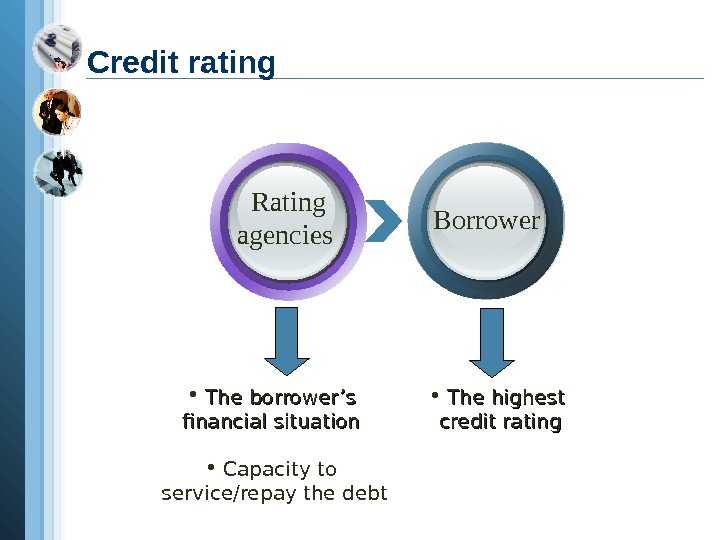
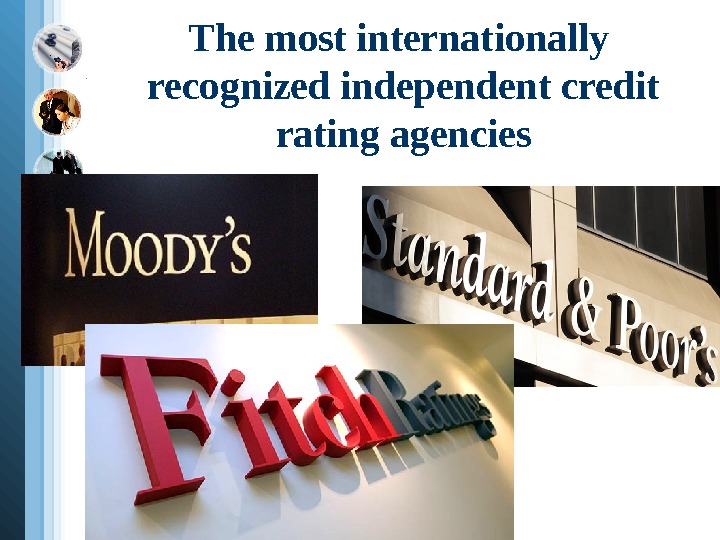

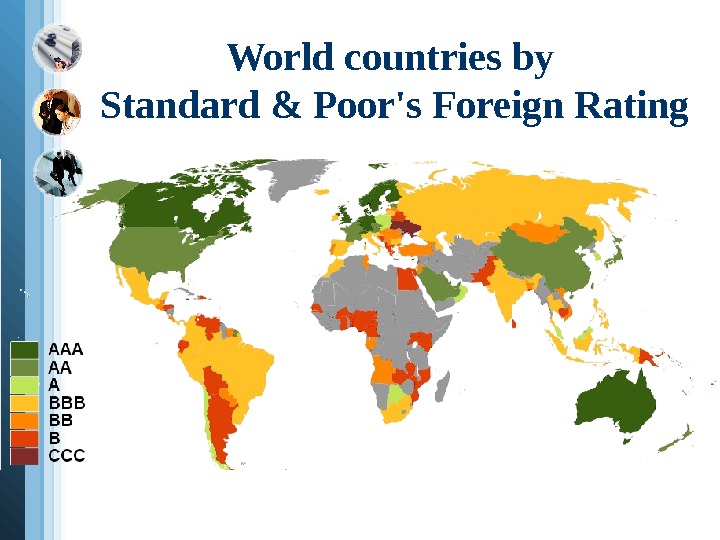
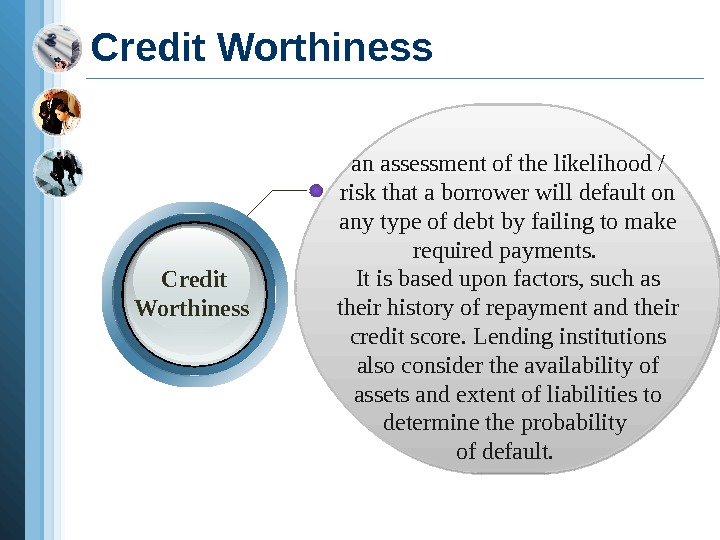
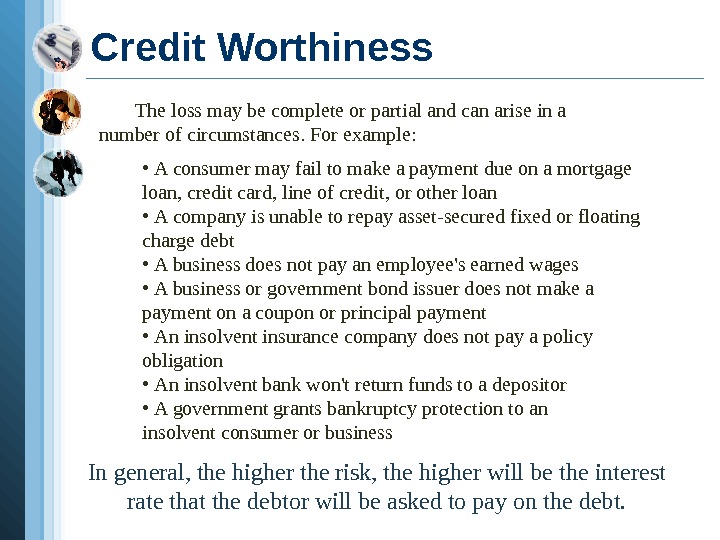
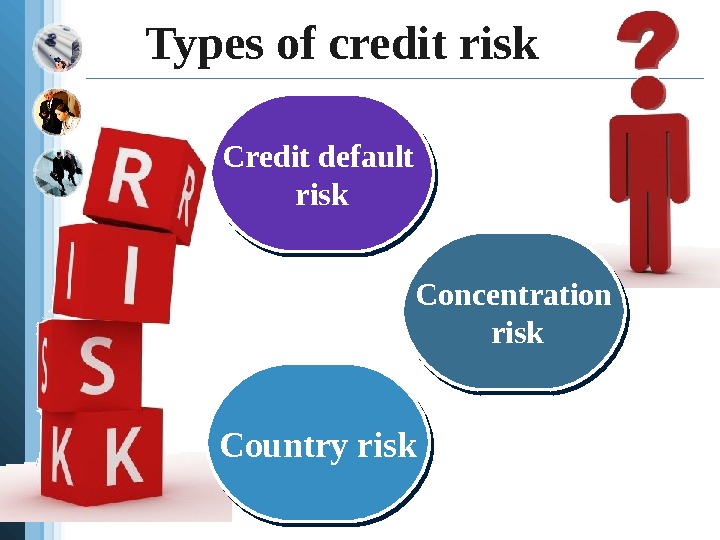
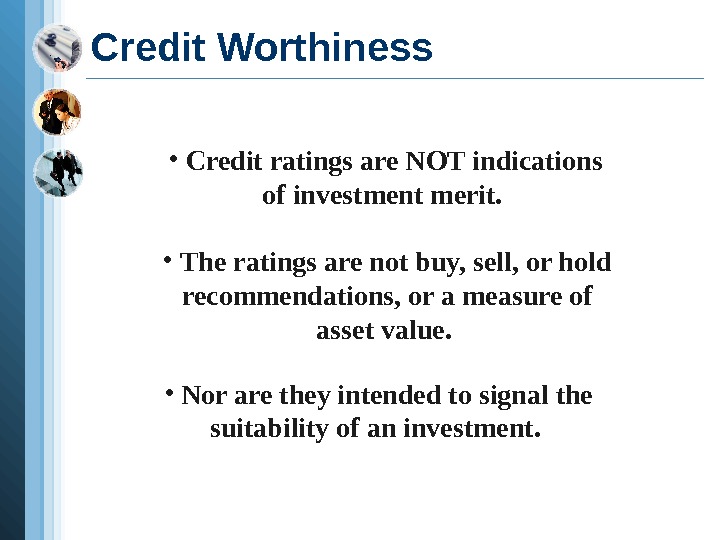
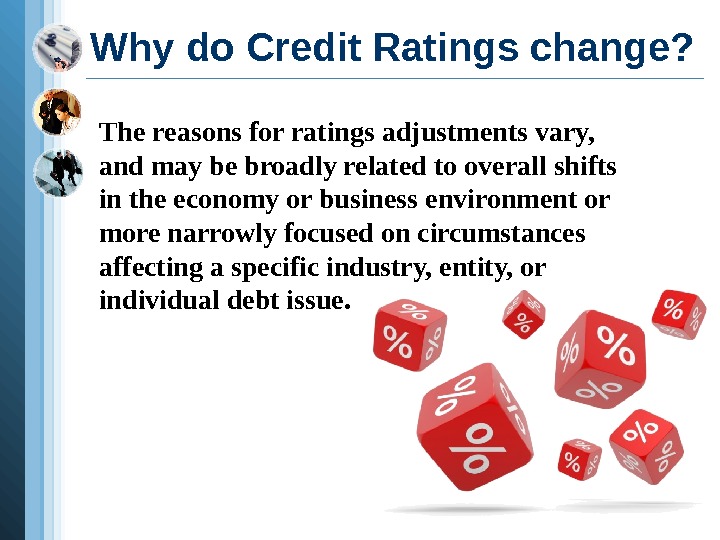
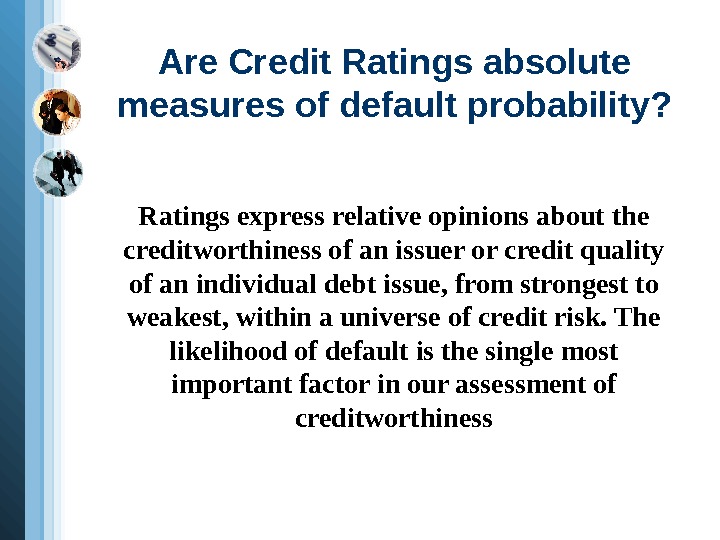
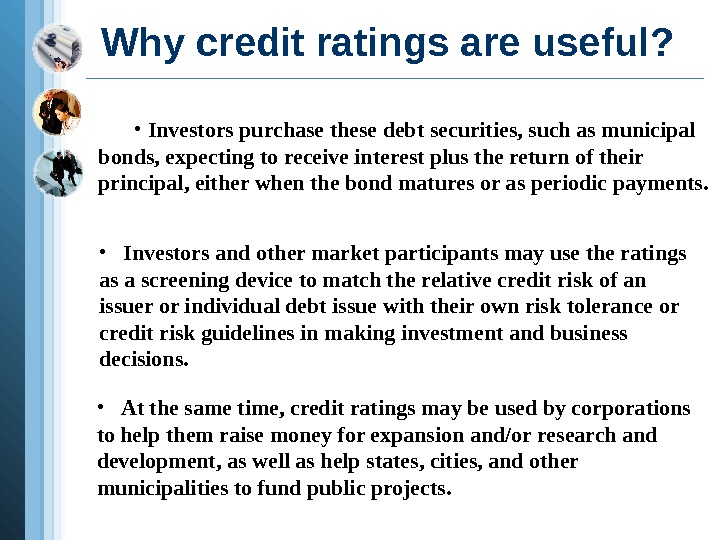
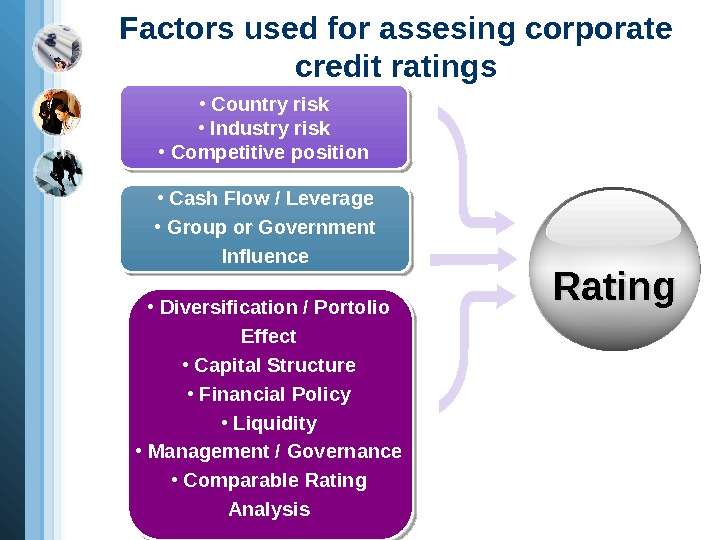
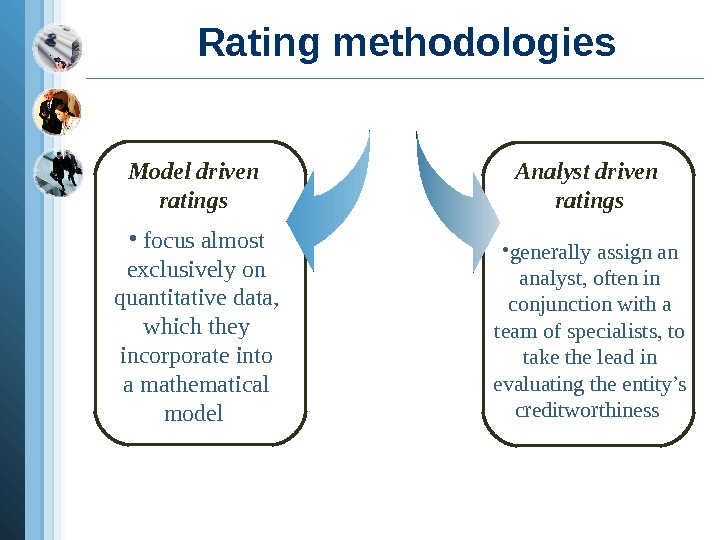
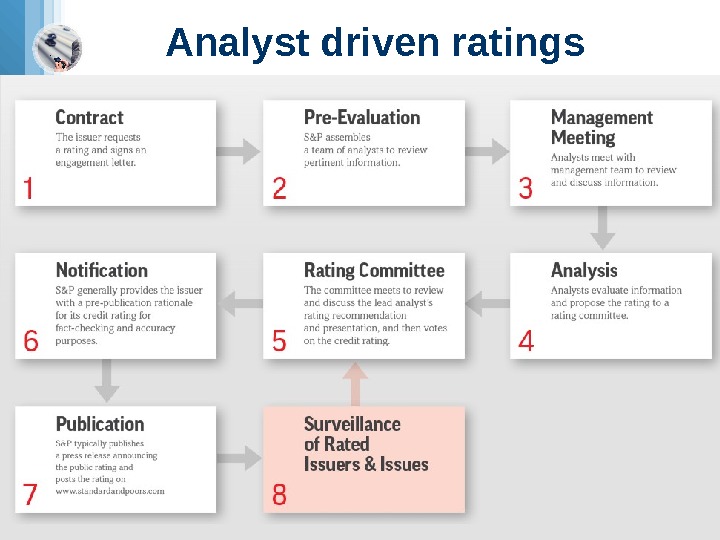
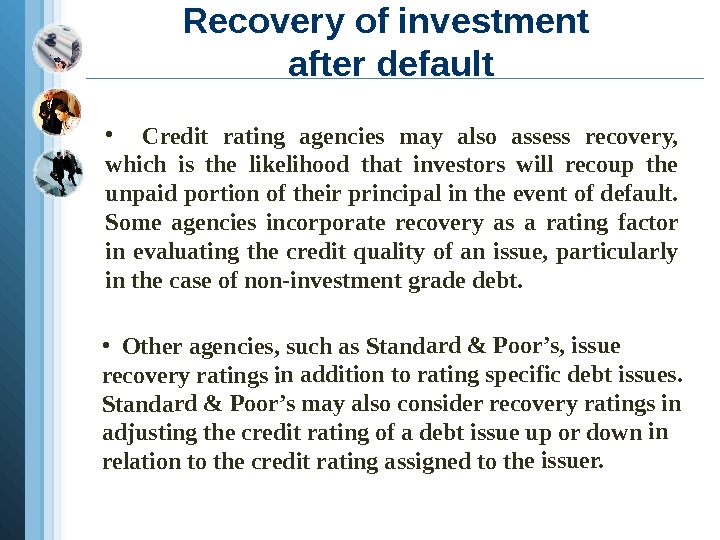

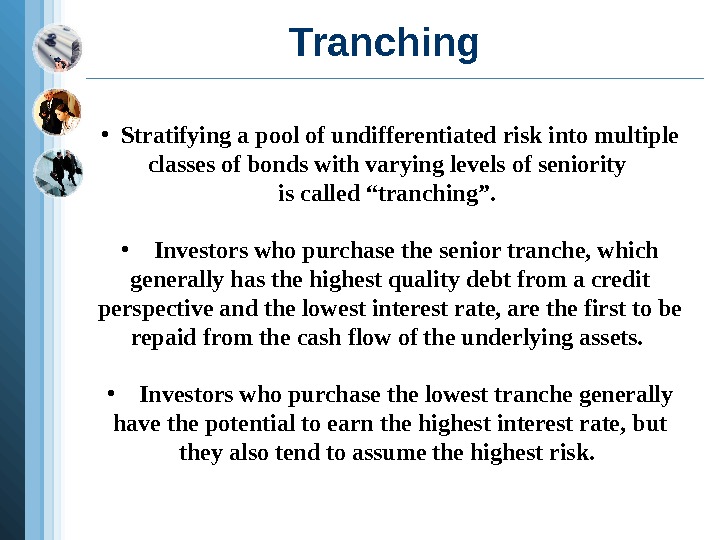
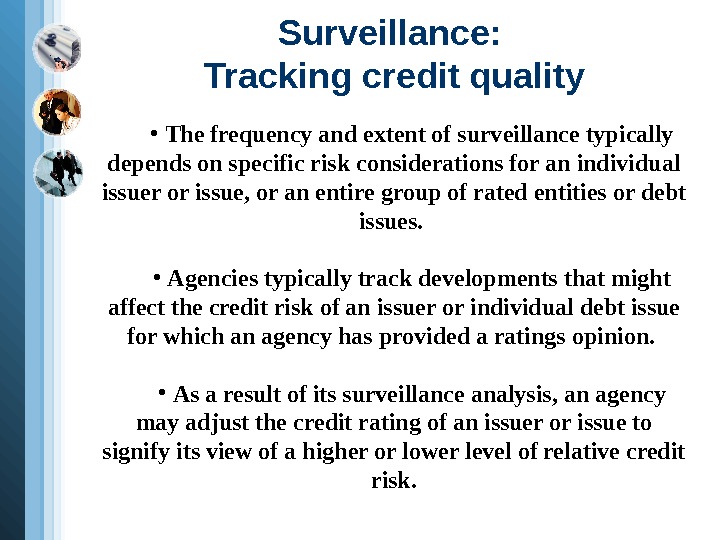
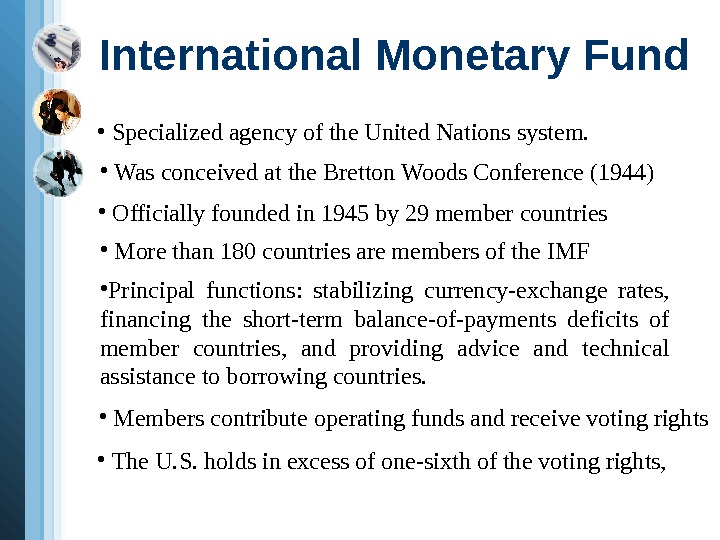
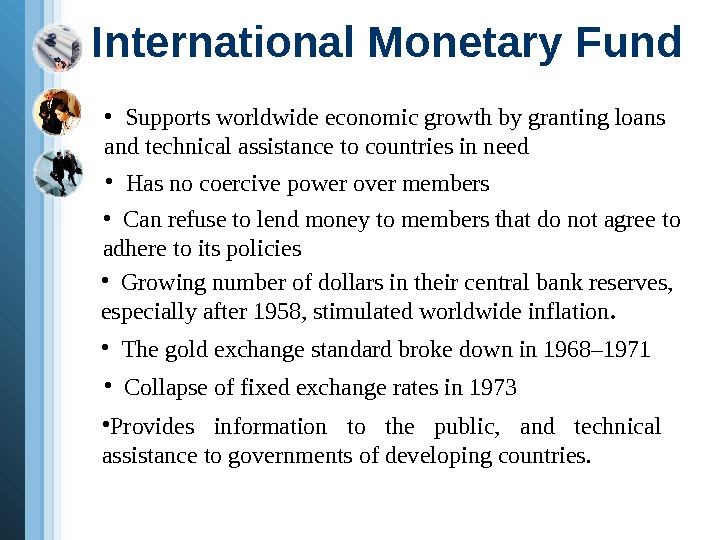
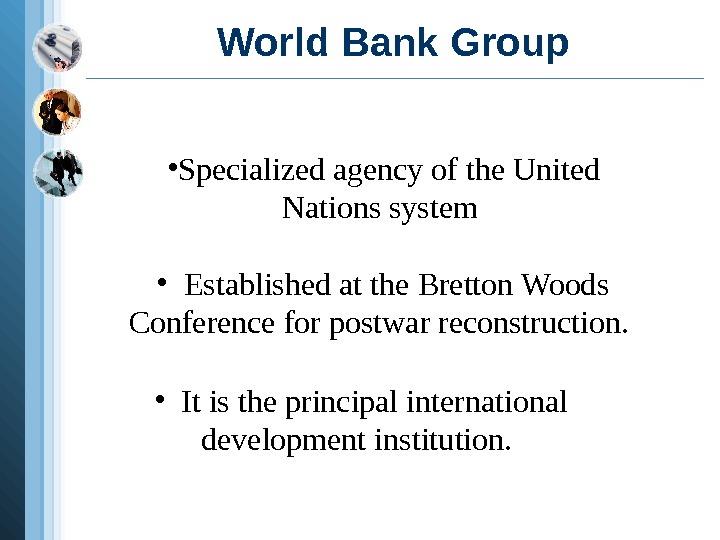

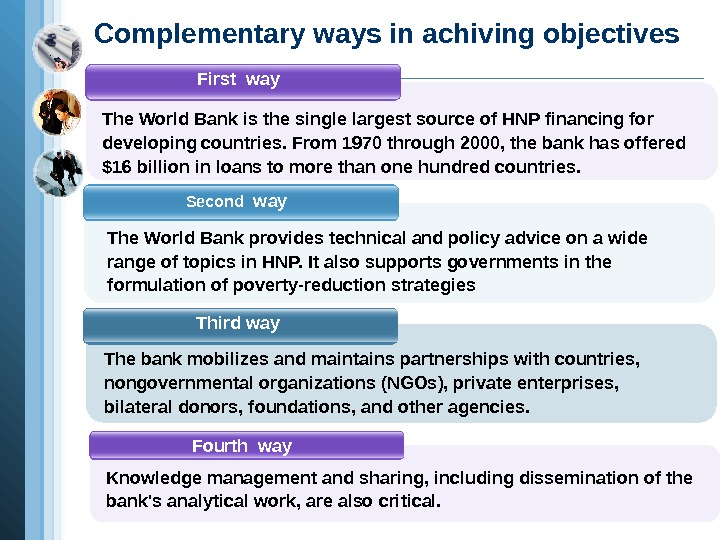

- Размер: 1.5 Mегабайта
- Количество слайдов: 29
Описание презентации www. themegallery. com LOGO Credit rating по слайдам
 www. themegallery. com LOGO Credit rating & Rating agencies Kuzmina Vladyslava Dubenko Anna
www. themegallery. com LOGO Credit rating & Rating agencies Kuzmina Vladyslava Dubenko Anna
 an evaluation of the credit worthiness of a debtor, especially a state, business (company) or a government. Or in other words, an estimate of the ability of a person or organization to fulfill their financial commitments, based on previous dealings. The evaluation is made by a credit rating agency of the debtor’s ability to pay back the debt and the likelihood of default. Credit rating
an evaluation of the credit worthiness of a debtor, especially a state, business (company) or a government. Or in other words, an estimate of the ability of a person or organization to fulfill their financial commitments, based on previous dealings. The evaluation is made by a credit rating agency of the debtor’s ability to pay back the debt and the likelihood of default. Credit rating
 The real role of credit ratings in the financial system is to improve the functioning of markets by reducing information asymmetry between issuers and borrowers who need funding and the investors and lenders who can provide it. By serving as information intermediaries, CRAs (Community Reinvestment Act) theoretically reduce information costs, increase the pool of potential borrowers, and promote liquid markets. These functions may increase the supply of available risk capital in the market and promote economic growth. Credit rating
The real role of credit ratings in the financial system is to improve the functioning of markets by reducing information asymmetry between issuers and borrowers who need funding and the investors and lenders who can provide it. By serving as information intermediaries, CRAs (Community Reinvestment Act) theoretically reduce information costs, increase the pool of potential borrowers, and promote liquid markets. These functions may increase the supply of available risk capital in the market and promote economic growth. Credit rating
 A credit rating can be assigned to any entity that seeks to borrow money – a corporation, state or provincial authority, or sovereign government. Credit rating
A credit rating can be assigned to any entity that seeks to borrow money – a corporation, state or provincial authority, or sovereign government. Credit rating
 Credit ratings are not based on mathematical formulas. Credit ratings for borrowers are based on substantial due diligence conducted by the rating agencies.
Credit ratings are not based on mathematical formulas. Credit ratings for borrowers are based on substantial due diligence conducted by the rating agencies.
 Credit rating Rating agencies Borrower • The borrower’s financial situation • Capacity to service/repay the debt • The highest credit rating
Credit rating Rating agencies Borrower • The borrower’s financial situation • Capacity to service/repay the debt • The highest credit rating
 The most internationally recognized independent credit rating agencies
The most internationally recognized independent credit rating agencies

 World countries by Standard & Poor’s Foreign Rating
World countries by Standard & Poor’s Foreign Rating
 an assessment of the likelihood / risk that a borrower will default on any type of debt by failing to make required payments. It is based upon factors, such as their history of repayment and their credit score. Lending institutions also consider the availability of assets and extent of liabilities to determine the probability of default. Credit Worthiness
an assessment of the likelihood / risk that a borrower will default on any type of debt by failing to make required payments. It is based upon factors, such as their history of repayment and their credit score. Lending institutions also consider the availability of assets and extent of liabilities to determine the probability of default. Credit Worthiness
 Credit Worthiness The loss may be complete or partial and can arise in a number of circumstances. For example: • A consumer may fail to make a payment due on a mortgage loan, credit card, line of credit, or other loan • A company is unable to repay asset-secured fixed or floating charge debt • A business does not pay an employee’s earned wages • A business or government bond issuer does not make a payment on a coupon or principal payment • An insolvent insurance company does not pay a policy obligation • An insolvent bank won’t return funds to a depositor • A government grants bankruptcy protection to an insolvent consumer or business In general, the higher the risk, the higher will be the interest rate that the debtor will be asked to pay on the debt.
Credit Worthiness The loss may be complete or partial and can arise in a number of circumstances. For example: • A consumer may fail to make a payment due on a mortgage loan, credit card, line of credit, or other loan • A company is unable to repay asset-secured fixed or floating charge debt • A business does not pay an employee’s earned wages • A business or government bond issuer does not make a payment on a coupon or principal payment • An insolvent insurance company does not pay a policy obligation • An insolvent bank won’t return funds to a depositor • A government grants bankruptcy protection to an insolvent consumer or business In general, the higher the risk, the higher will be the interest rate that the debtor will be asked to pay on the debt.
 Types of credit risk Credit default risk Concentration risk Country risk
Types of credit risk Credit default risk Concentration risk Country risk
 Credit Worthiness • Credit ratings are NOT indications of investment merit. • The ratings are not buy, sell, or hold recommendations, or a measure of asset value. • Nor are they intended to signal the suitability of an investment.
Credit Worthiness • Credit ratings are NOT indications of investment merit. • The ratings are not buy, sell, or hold recommendations, or a measure of asset value. • Nor are they intended to signal the suitability of an investment.
 Why do Credit Ratings change? The reasons for ratings adjustments vary, and may be broadly related to overall shifts in the economy or business environment or more narrowly focused on circumstances affecting a specific industry, entity, or individual debt issue.
Why do Credit Ratings change? The reasons for ratings adjustments vary, and may be broadly related to overall shifts in the economy or business environment or more narrowly focused on circumstances affecting a specific industry, entity, or individual debt issue.
 Are Credit Ratings absolute measures of default probability? Ratings express relative opinions about the creditworthiness of an issuer or credit quality of an individual debt issue, from strongest to weakest, within a universe of credit risk. The likelihood of default is the single most important factor in our assessment of creditworthiness
Are Credit Ratings absolute measures of default probability? Ratings express relative opinions about the creditworthiness of an issuer or credit quality of an individual debt issue, from strongest to weakest, within a universe of credit risk. The likelihood of default is the single most important factor in our assessment of creditworthiness
 Why credit ratings are useful? • Investors purchase these debt securities, such as municipal bonds, expecting to receive interest plus the return of their principal, either when the bond matures or as periodic payments. • Investors and other market participants may use the ratings as a screening device to match the relative credit risk of an issuer or individual debt issue with their own risk tolerance or credit risk guidelines in making investment and business decisions. • At the same time, credit ratings may be used by corporations to help them raise money for expansion and/or research and development, as well as help states, cities, and other municipalities to fund public projects.
Why credit ratings are useful? • Investors purchase these debt securities, such as municipal bonds, expecting to receive interest plus the return of their principal, either when the bond matures or as periodic payments. • Investors and other market participants may use the ratings as a screening device to match the relative credit risk of an issuer or individual debt issue with their own risk tolerance or credit risk guidelines in making investment and business decisions. • At the same time, credit ratings may be used by corporations to help them raise money for expansion and/or research and development, as well as help states, cities, and other municipalities to fund public projects.
 Factors used for assesing corporate credit ratings • Cash Flow / Leverage • Group or Government Influence • Country risk • Industry risk • Competitive position • Diversification / Portolio Effect • Capital Structure • Financial Policy • Liquidity • Management / Governance • Comparable Rating Analysis Rating
Factors used for assesing corporate credit ratings • Cash Flow / Leverage • Group or Government Influence • Country risk • Industry risk • Competitive position • Diversification / Portolio Effect • Capital Structure • Financial Policy • Liquidity • Management / Governance • Comparable Rating Analysis Rating
 Rating methodologies Model driven ratings • focus almost exclusively on quantitative data, which they incorporate into a mathematical model Analyst driven ratings • generally assign an analyst, often in conjunction with a team of specialists, to take the lead in evaluating the entity’s creditworthiness
Rating methodologies Model driven ratings • focus almost exclusively on quantitative data, which they incorporate into a mathematical model Analyst driven ratings • generally assign an analyst, often in conjunction with a team of specialists, to take the lead in evaluating the entity’s creditworthiness
 Analyst driven ratings
Analyst driven ratings
 Recovery of investment after default • Credit rating agencies may also assess recovery, which is the likelihood that investors will recoup the unpaid portion of their principal in the event of default. Some agencies incorporate recovery as a rating factor in evaluating the credit quality of an issue, particularly in the case of non-investment grade debt. • Other agencies, such as Standard & Poor’s, issue recovery ratings in addition to rating specific debt issues. Standard & Poor’s may also consider recovery ratings in adjusting the credit rating of a debt issue up or down in relation to the credit rating assigned to the issuer.
Recovery of investment after default • Credit rating agencies may also assess recovery, which is the likelihood that investors will recoup the unpaid portion of their principal in the event of default. Some agencies incorporate recovery as a rating factor in evaluating the credit quality of an issue, particularly in the case of non-investment grade debt. • Other agencies, such as Standard & Poor’s, issue recovery ratings in addition to rating specific debt issues. Standard & Poor’s may also consider recovery ratings in adjusting the credit rating of a debt issue up or down in relation to the credit rating assigned to the issuer.
 Rating structured finance instruments Arrangers Establish SPE Assets : • Mortgages • Student loans • Auto loans • Credit card receivables Investors evaluate securities based on credit risk guidelines. Originators make loans SPE (Special Purpose Entity) Develops structured finance instruments • Senior tranches • Junior tranches • Equity tranches May be supported by credit enhancements such as overcollateralization Investors purchase securities SPE issues securities. SPE funds purchase of assets SPE purchases assets (collateral)
Rating structured finance instruments Arrangers Establish SPE Assets : • Mortgages • Student loans • Auto loans • Credit card receivables Investors evaluate securities based on credit risk guidelines. Originators make loans SPE (Special Purpose Entity) Develops structured finance instruments • Senior tranches • Junior tranches • Equity tranches May be supported by credit enhancements such as overcollateralization Investors purchase securities SPE issues securities. SPE funds purchase of assets SPE purchases assets (collateral)
 Tranching • Stratifying a pool of undifferentiated risk into multiple classes of bonds with varying levels of seniority is called “tranching”. • Investors who purchase the senior tranche, which generally has the highest quality debt from a credit perspective and the lowest interest rate, are the first to be repaid from the cash flow of the underlying assets. • Investors who purchase the lowest tranche generally have the potential to earn the highest interest rate, but they also tend to assume the highest risk.
Tranching • Stratifying a pool of undifferentiated risk into multiple classes of bonds with varying levels of seniority is called “tranching”. • Investors who purchase the senior tranche, which generally has the highest quality debt from a credit perspective and the lowest interest rate, are the first to be repaid from the cash flow of the underlying assets. • Investors who purchase the lowest tranche generally have the potential to earn the highest interest rate, but they also tend to assume the highest risk.
 Surveillance: Tracking credit quality • The frequency and extent of surveillance typically depends on specific risk considerations for an individual issuer or issue, or an entire group of rated entities or debt issues. • Agencies typically track developments that might affect the credit risk of an issuer or individual debt issue for which an agency has provided a ratings opinion. • As a result of its surveillance analysis, an agency may adjust the credit rating of an issuer or issue to signify its view of a higher or lower level of relative credit risk.
Surveillance: Tracking credit quality • The frequency and extent of surveillance typically depends on specific risk considerations for an individual issuer or issue, or an entire group of rated entities or debt issues. • Agencies typically track developments that might affect the credit risk of an issuer or individual debt issue for which an agency has provided a ratings opinion. • As a result of its surveillance analysis, an agency may adjust the credit rating of an issuer or issue to signify its view of a higher or lower level of relative credit risk.
 International Monetary Fund • Specialized agency of the United Nations system. • Was conceived at the Bretton Woods Conference (1944) • Officially founded in 1945 by 29 member countries • More than 180 countries are members of the IMF • Principal functions : stabilizing currency-exchange rates, financing the short-term balance-of-payments deficits of member countries, and providing advice and technical assistance to borrowing countries. • Members contribute operating funds and receive voting rights • The U. S. holds in excess of one-sixth of the voting rights,
International Monetary Fund • Specialized agency of the United Nations system. • Was conceived at the Bretton Woods Conference (1944) • Officially founded in 1945 by 29 member countries • More than 180 countries are members of the IMF • Principal functions : stabilizing currency-exchange rates, financing the short-term balance-of-payments deficits of member countries, and providing advice and technical assistance to borrowing countries. • Members contribute operating funds and receive voting rights • The U. S. holds in excess of one-sixth of the voting rights,
 International Monetary Fund • Supports worldwide economic growth by granting loans and technical assistance to countries in need • Has no coercive power over members • Can refuse to lend money to members that do not agree to adhere to its policies • Growing number of dollars in their central bank reserves, especially after 1958, stimulated worldwide inflation. • The gold exchange standard broke down in 1968– 1971 • Collapse of fixed exchange rates in 1973 • Provides information to the public, and technical assistance to governments of developing countries.
International Monetary Fund • Supports worldwide economic growth by granting loans and technical assistance to countries in need • Has no coercive power over members • Can refuse to lend money to members that do not agree to adhere to its policies • Growing number of dollars in their central bank reserves, especially after 1958, stimulated worldwide inflation. • The gold exchange standard broke down in 1968– 1971 • Collapse of fixed exchange rates in 1973 • Provides information to the public, and technical assistance to governments of developing countries.
 World Bank Group • Specialized agency of the United Nations system • Established at the Bretton Woods Conference for postwar reconstruction. • It is the principal international development institution.
World Bank Group • Specialized agency of the United Nations system • Established at the Bretton Woods Conference for postwar reconstruction. • It is the principal international development institution.
 World Bank Group Divisions The International Development Association (IDA)The International Bank for Reconstruction and Development (IBRD) The International Finance Corporation (IFC) The Multilateral Investment Guarantee Agency (MIGA) The International Center for Settlement of Investment Disputes (ICSID)
World Bank Group Divisions The International Development Association (IDA)The International Bank for Reconstruction and Development (IBRD) The International Finance Corporation (IFC) The Multilateral Investment Guarantee Agency (MIGA) The International Center for Settlement of Investment Disputes (ICSID)
 Complementary ways in achiving objectives First way The World Bank is the single largest source of HNP financing for developing countries. From 1970 through 2000, the bank has offered $16 billion in loans to more than one hundred countries. Third way The bank mobilizes and maintains partnerships with countries, nongovernmental organizations (NGOs), private enterprises, bilateral donors, foundations, and other agencies. Second way The World Bank provides technical and policy advice on a wide range of topics in HNP. It also supports governments in the formulation of poverty-reduction strategies Fourth way Knowledge management and sharing, including dissemination of the bank’s analytical work, are also critical.
Complementary ways in achiving objectives First way The World Bank is the single largest source of HNP financing for developing countries. From 1970 through 2000, the bank has offered $16 billion in loans to more than one hundred countries. Third way The bank mobilizes and maintains partnerships with countries, nongovernmental organizations (NGOs), private enterprises, bilateral donors, foundations, and other agencies. Second way The World Bank provides technical and policy advice on a wide range of topics in HNP. It also supports governments in the formulation of poverty-reduction strategies Fourth way Knowledge management and sharing, including dissemination of the bank’s analytical work, are also critical.
 www. themegallery. com LOGO
www. themegallery. com LOGO

